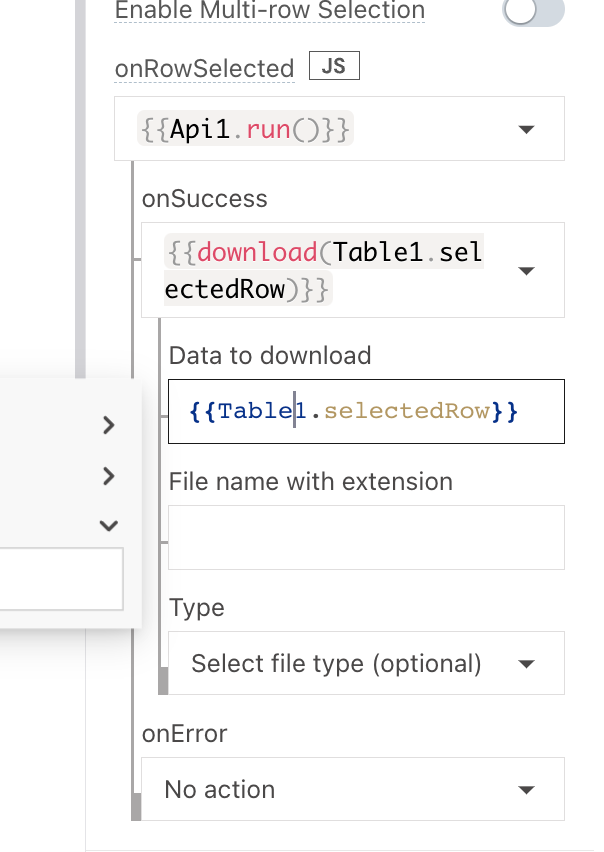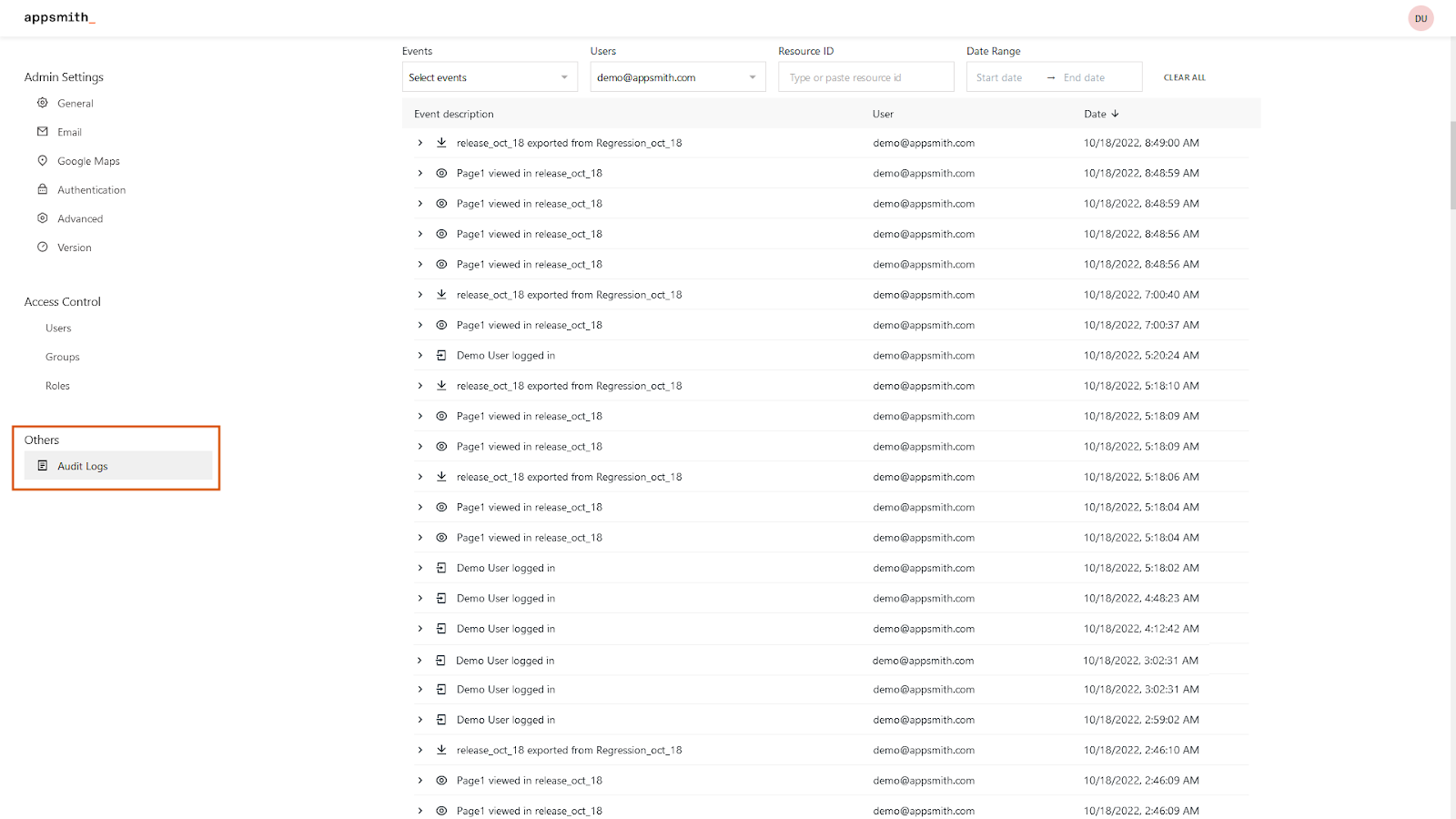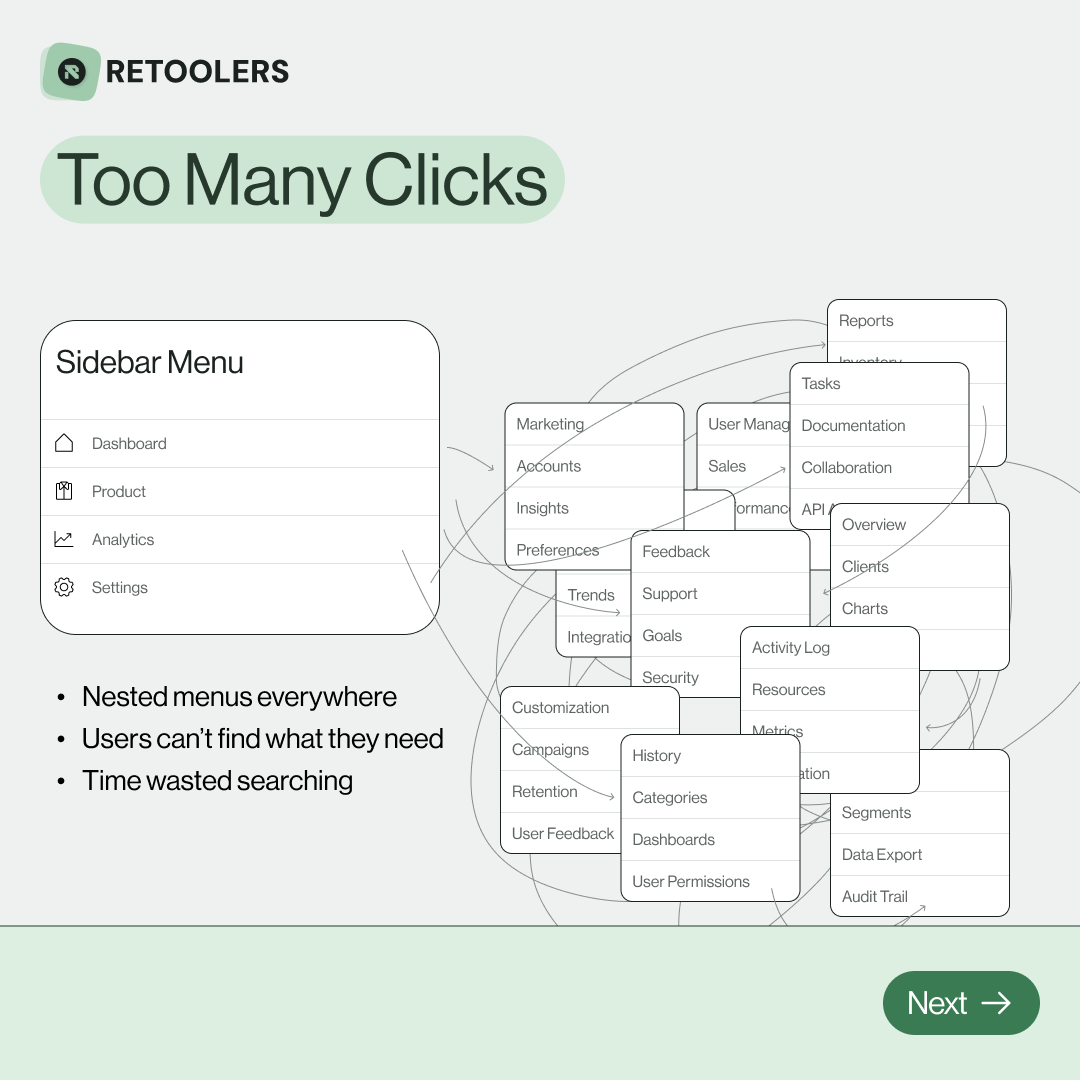Duy Vu
October 11, 2025
•
28 mins read

Appsmith is an internal tool IDE that has carved out a niche as an open‑source alternative to platforms like Retool and Outsystems. It’s designed for developers who want to build internal business applications faster, using drag‑and‑drop components, built‑in authentication, and integrations with APIs and databases.

Unlike many competitors, the answer to “is Appsmith open source” is yes. That’s its biggest differentiator: teams can download the source code, self‑host, and even contribute to the community edition. For some organizations, this transparency is appealing because it reduces vendor lock‑in and provides more control.
But Appsmith is limited in scope. It only supports web app development. If you need mobile apps, CRON jobs, or portals, you’ll need another platform.
Founded in 2019 in Bangalore, Appsmith is a Series B startup with around 100 employees and ~$51 million raised. The company markets itself as a developer‑first platform for building internal tools like admin dashboards and customer service panels.
Appsmith deliberately distances itself from the “low‑code” label. It wants to be seen as a framework built by developers, for developers. Its open‑source status reinforces that message, giving engineers confidence they won’t hit hard platform limitations.

Compared to Retool, Appsmith is younger, less funded, and narrower in scope. But its open‑source positioning has helped it build a loyal community of developers who value transparency and extensibility.
Appsmith integrates with over 40 native resources and supports REST APIs. Developers can also import curl commands directly. This makes it flexible enough to connect to most backends, though the integration catalog is smaller than Retool’s.

Appsmith offers ~50 pre‑built components you can drag onto a canvas. Each can be customized with JavaScript escape hatches ({{ }}) or CRUD dropdowns. Styling is also programmatically adjustable.
However, Appsmith doesn’t yet support reusable custom components natively. You can build widgets via their widget API, but they must be approved before release — a bottleneck for teams that want to move fast. Retool, by contrast, allows developers to create and reuse custom components more freely.
Image placement: IDE sectionImage suggestion: Screenshot of Appsmith drag‑and‑drop canvas with components.
Appsmith takes a code‑first approach. Developers write .run() methods directly into event handlers. While this appeals to engineers, the options are limited compared to Retool’s more robust event handling system.

One of Appsmith’s strengths is Git integration out‑of‑the‑box. Developers can manage features and releases using their existing Git workflows.

Appsmith provides audit logs for both end‑user actions and app edits. Logs can be exported, but they don’t natively integrate with external monitoring platforms like Segment or Google Analytics.

Appsmith emphasizes self‑hosting. Documentation and security practices are geared toward on‑prem deployments, with enterprise authentication options like Okta and GitHub OAuth.
Image placement: Self‑hosting sectionImage suggestion: Illustration showing cloud vs self‑hosted deployment options.
Appsmith is designed for developers, not business users. To use it effectively, you need to know JavaScript, SQL, and how to work with APIs. For engineering teams building internal dashboards, admin panels, or customer service tools, Appsmith can accelerate development compared to coding from scratch.

It’s less suited for small startups or non‑technical teams who want to build without writing code. For those use cases, low‑code or no‑code platforms are a better fit.
Appsmith pricing is unusual. Instead of flat per‑user fees, it charges based on hourly usage. On the business plan, each active hour costs $0.40, capped at $20 per user per month.
That means if a user triggers an action at 10:05am and again at 11:30am, they’re billed for two hours, even if they only spent a few minutes in the app. For light‑usage users, this can be cost‑effective — as little as $0.40 per month. For heavy users, the cap ensures costs don’t spiral.
Unlike Retool, Appsmith doesn’t differentiate between developers and end‑users in its pricing. This can be attractive for organizations with many occasional users, but it also makes cost forecasting more complex.

The biggest differentiator is that Appsmith is open source. For teams that require open‑source software, Appsmith is one of the few serious options in the internal tool space.
Image placement: Differentiator sectionImage suggestion: Graphic showing “Open Source” badge vs “Closed Source” competitors.
Appsmith is built to scale and handle enterprise deployments, but its feature set is narrower than Retool’s. With fewer components, limited event handling, and no mobile or automation products, it’s less versatile.
Image placement: Feature comparison sectionImage suggestion: Feature comparison table — Appsmith vs Retool vs Budibase vs Superblocks.
Appsmith pricing is competitive, especially for light‑usage scenarios. But for teams with heavy daily usage, the cost ends up similar to flat per‑user models.
Appsmith focuses only on web apps. Retool, by contrast, offers a broader suite: mobile apps, workflows, databases, and portals.
Yes — Appsmith is open source. The source code is available on GitHub, and teams can self‑host, customize, and even contribute back to the project.
Image placement: FAQ sectionImage suggestion: Screenshot of Appsmith GitHub repository.
Appsmith pricing is based on hourly usage. Each active hour costs $0.40, capped at $20 per user per month. Light users may cost as little as $0.40 per month, while heavy users never exceed the cap.
Appsmith doesn’t support mobile apps, CRON jobs, or portals. Its component library is smaller than Retool’s, event handling is less flexible, and custom widgets require approval before release.
Appsmith is best for developer teams who know JavaScript, SQL, and APIs. It’s a good fit for enterprises that want open‑source software and prefer self‑hosting.
Both platforms target developers, but Retool offers a broader product suite: web apps, mobile apps, workflows, databases, and portals. Appsmith’s main advantage is being open source, while Retool’s strength lies in scalability and enterprise‑grade flexibility.
Appsmith has carved out a meaningful place in the internal tool ecosystem by leaning into its open‑source roots, developer‑first positioning, and flexible self‑hosting options. For engineering teams that value transparency, Git‑based workflows, and the ability to customize at the source‑code level, it’s a credible option. Its unique hourly pricing model can also make sense for organizations with many light‑usage users.
But when you zoom out, the trade‑offs become clear. Appsmith’s narrower feature set, limited event handling, and lack of mobile, workflow, and portal capabilities mean it can’t always keep pace with the demands of scaling teams. For companies that need a platform to grow with them — one that supports web and mobile apps, automations, databases, and enterprise‑grade extensibility — Retool offers a more complete, future‑proof solution.
At Retoolers, we see Appsmith as part of a broader trend: developers want faster ways to build internal tools without sacrificing control. Appsmith proves the appetite is there. But if your team is serious about building robust, scalable internal applications that go beyond the basics, Retool is the platform designed to take you further.
Stop wasting hours on scattered tools. Let Retoolers build your custom dashboard and streamline your operations today. Book a call with us!
Looking to supercharge your operations? We’re masters in Retool and experts at building internal tools, dashboards, admin panels, and portals that scale with your business. Let’s turn your ideas into powerful tools that drive real impact.
Curious how we’ve done it for others? Explore our Use Cases to see real-world examples, or check out Our Work to discover how we’ve helped teams like yours streamline operations and unlock growth.

🔎 Internal tools often fail because of one simple thing: Navigation.
Too many clicks, buried menus, lost users.
We broke it down in this 4-slide carousel:
1️⃣ The problem (too many clicks)
2️⃣ The fix (clear navigation structure)
3️⃣ The Retool advantage (drag-and-drop layouts)
4️⃣ The impact (happier teams)
💡 With Retool, you can design internal tools that are easy to use, fast to build, and simple to maintain.
👉 Swipe through the carousel and see how better UX = better productivity.
📞 Ready to streamline your tools? Book a call with us at Retoolers.

🚀From idea → app in minutesBuilding internal tools used to take weeks.
Now, with AI App Generation in Retool, you can describe what you want in plain English and let AI do the heavy lifting.
At Retoolers, we help teams move faster by combining AI + Retool to create tools that actually fit their workflows.
👉 Check out our blog for the full breakdown: https://lnkd.in/gMAiqy9F
As part of our process, you’ll receive a FREE business analysis to assess your needs, followed by a FREE wireframe to visualize the solution. After that, we’ll provide you with the most accurate pricing and the best solution tailored to your business. Stay tuned—we’ll be in touch shortly!



